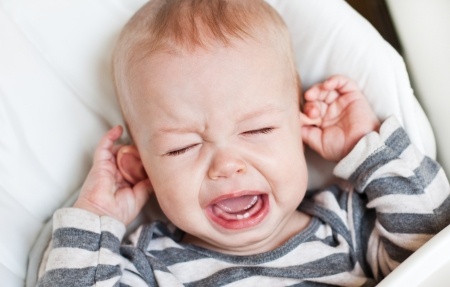Paediatrics
All About Asthma

Childhood asthma is essentially the same lung condition that occurs in adults, according to
Dr Yip Hwee Seng, Consultant, Respiratory Medicine and Intensive Care Medicine at The Respiratory Practice. That said, asthma affects approximately one in five children in Singapore, and the majority will outgrow it. Dr Terence Tan, Paediatrician, Kinder Clinic Mount Alvernia, weighs in on the subject.
WHAT IS ASTHMA?
Asthma is an inflammation of the airways that causes breathlessness, chest tightness, wheezing and coughing. The symptoms are usually episodic, and brought on by triggers that may be specific allergies or more general triggers.
“Childhood asthma is the same lung condition seen in adults, with symptoms starting from childhood. It is not a separate disease. Most asthma patients start experiencing symptoms during childhood,” clarified Dr Yip.

WHAT CAUSES IT?
The causes of asthma are numerous, complex and not all fully understood. A family history of asthma or allergic conditions that trigger its symptoms is the main risk factor for childhood asthma.
“Common specific triggers include dust mite, pollen, nuts, cockroaches, moulds, food colouring and dairy foods. Non-specific triggers include infections, stress and temperature change,” shared Dr Tan.
In addition, viral infections such as the respiratory syncytial virus are also thought to increase the risk of asthma if a child has the infection in early childhood, along with environmental factors such as pollution and passive cigarette smoke exposure.
Dr Yip raised an interesting and increasingly accepted theory known as the hygiene hypothesis.
“The incidence of asthma in Singapore has increased over the years. This has been attributed to urbanisation. Early childhood exposure to microorganisms is believed to help our immune systems develop. However, the modern living environment may be too clean, and does not challenge the immune systems of the young. This is thought to lead to frequent allergies and conditions such as asthma,” explained Dr Yip.

WHY DO ASTHMA SUFFERERS OFTEN HAVE ALLERGIES?
The association of asthma with other allergic disorders such as allergic rhinitis, eczema, allergic conjunctivitis and food allergies is well established.
“The same pathway from the lack of exposure to microorganisms in early childhood is thought to lead to similar allergic conditions such as eczema and allergic rhinitis,” said Dr Yip, harking back to the hygiene hypothesis. “Genetics may also play a role in it,” he added.
“Many kids who have one or more of these other allergic conditions are more at risk of allergic asthma. Basically, asthma in these children is the lung manifestation of their allergic tendency,”
shared Dr Tan.
HOW IS ASTHMA TREATED?
“Patients are encouraged to self-manage their asthma, through a written asthma action plan, which is a written treatment plan issued and explained to you by your doctor,” advised Dr Yip. The action plan will typically include the use of medication.
There are two basic types of medication that are prescribed to treat asthma. They are:
Relievers
• aim to relieve exacerbations or attacks
• work quickly
• used as needed
Controllers
• aim to prevent attacks
• work slowly over time
• used regularly
Both relievers and controllers are typically inhaled through handheld devices or taken orally as medicine.
Dr Tan explained that for young patients, the threefold objectives of treatment are: to achieve a good or normal quality of life; to protect and preserve lung function; and to minimise or ideally avoid the side effects of treatment. Most children will be prescribed both reliever and controller medication, and sometimes both will be combined.
WHEN IS MEDICAL ATTENTION REQUIRED?
According to Dr Yip, mild asthma attacks can be safely managed at home by following the instructions outlined in the patient’s asthma action plan. However, medical attention should be sought when breathlessness is very severe and shows no improvement after the use of reliever medication, or only with the frequent use of reliever medication, and when breathlessness limits regular activities.
Both doctors emphasised the importance of a detailed written action plan, developed with a doctor, which will include clear criteria regarding what constitutes a severe asthma attack and instructions on what to do in the event of one. For children who may not be old enough to manage their conditions, it is of course important for care givers and teachers to be familiar with the asthma action plan.
CAN ASTHMA BE OUTGROWN?
As the incidence of childhood asthma is thought to be about 20 percent and the incidence in adults is about 5 percent, it seems that approximately three-quarters of all children with asthma will outgrow it.
The main explanation for this decline in the incidence of asthma is the simple fact that as children grow, the diameter of their lung airways naturally increases. In children with milder asthma, their airways may grow to the point that wheezing no longer occurs. However, Dr Tan suggests other possible reasons that may contribute to the significantly higher rates of asthma among children compared to adults.
“First, the diagnosis of childhood asthma is not straightforward as specific tests like lung function testing or exhaled nitric oxide testing cannot be easily carried out,” said Dr Tan. Hence, what may have been thought to be childhood asthma may be finally attributed to other transient causes with asthma-like symptoms, such as recurrent bronchiolitis or recurrent viral induced wheeze. These conditions do not persist into adulthood.
“Secondly, there seems to be a change in the way allergic conditions, including asthma, affect children as they grow up. The so called ‘allergic march’ describes how many young children who wheeze eventually stop wheezing and instead develop more nasal symptoms in the form of allergic rhinitis,” shared Dr Tan.
HOPE IS ON THE HORIZON
As with almost all common and chronic medical conditions, science is improving the prognosis for all patients, regardless of age.
“There are new medications, which are generally termed biologics, that are available for treating severe asthma,” shared Dr Yip. These drugs are produced from living organisms or contain components of living organisms, using biotechnology.
“In addition, the concurrent treatment of certain allergies such as house dust mite allergy has been shown to improve asthma control, Dr Yip added.
Whether you are the parent of an asthmatic child or suffer from asthma yourself, that news should have you breathing more easily already.
Article contributed by Dr Yip Hwee Seng and Dr Terence Tan, accredited doctors of Mount Alvernia Hospital.
Dr Yip Hwee Seng
Consultant, Respiratory Medicine and Intensive Care Medicine
The Respiratory Practice
Medical Centre D #06-56
Tel: 6256 2606
Dr Terence Tan
Paediatrician and Neonatologist
Kinder Clinic Mount Alvernia
Medical Centre A #06-03/04
Tel: 6478 5925
This article is taken from our My Alvernia Magazine Issue #42/43. Click here to read the issue on our website or on Magzter.



